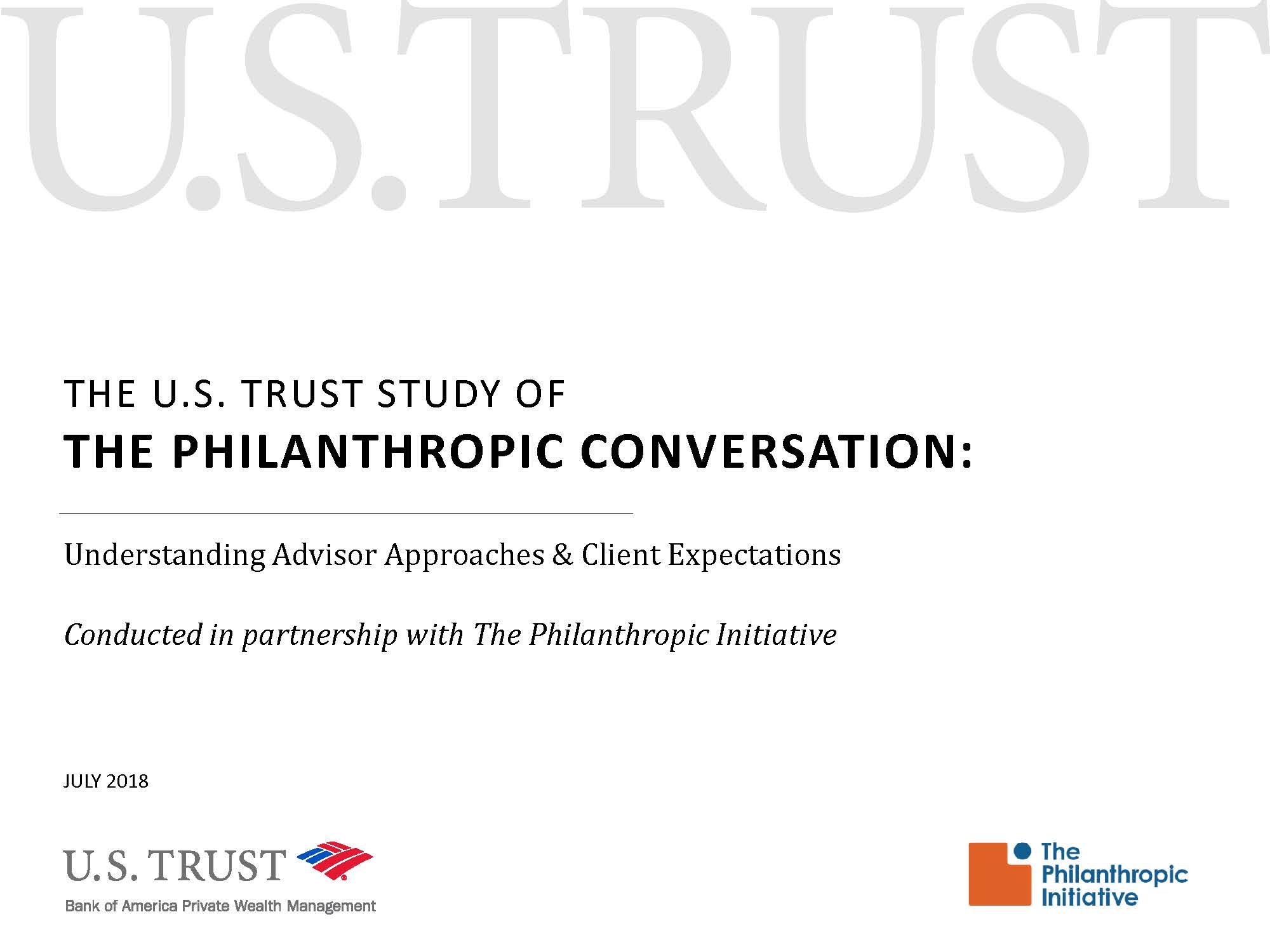
The breadth and depth of expertise sought by clients of a professional advisor these days can be staggering. Long gone are the days when it was sufficient to be an expert in estate planning alone, for example. Today, high net worth clients want to discuss in depth not only how their assets are managed, but also how their assets can be mobilized for impact through tools like impact investing and, of course, philanthropy.
At TPI, we often partner with professional advisors to help support their clients. We help advisors respond to client questions and concerns about philanthropy, and we directly advise and support their clients to help them increase the impact of their giving. If you are considering strengthening your practice by layering in relationships with philanthropic advisors, here are four FAQs and responses that lay the groundwork for building client satisfaction on this issue.
How do I know when my client is ready for a conversation about philanthropy?
They are probably ready now. Most wealthy individuals and families discuss philanthropy with their professional advisors when talking about planning and goals; they are often the ones to raise the subject. However, several surveys have shown that many clients are thinking about philanthropy well before financial advisors raise the subject (if they do at all). Often, clients say, advisors wait too long to do so. While it’s understandable you want to work with new clients long enough to understand their goals and needs, it is never too early simply to ask how philanthropy might fit into their aspirations, both short-term and long-term. Positioning any expertise in charitable financial tools and giving is seen as a strength and possibly even a point of differentiation for new and potential clients.
Another prompt to initiate the conversation is the Great Wealth Transfer. As much as $68 trillion will shift to the next generation over the coming 25 years, and 80% of heirs anticipate changing advisors from those used by the generation before them. Again, according to survey after survey, including TPI’s own research in this area, proactively initiating the philanthropic conversation helps wealth advisors deepen their relationships with clients and their families.
My clients want to give, so how can I help them consider whether they they are giving wisely or enough?
Advisors often assume the top reasons why high net worth clients don’t give are financial ones, including worry about having enough to give or whether they can protect a solid core of assets. But for many if not most clients, their hesitations are not about whether to give, but around how to give effectively, how to make a difference, and how to find great partners to support. Professional advisors can tap into a variety of resources to help explore basic philanthropic goals, practices, and concerns, such as how to develop a meaningful giving plan and how to manage incoming requests without getting overwhelmed. For many advisors, the most important role is simply to help the client take that first step – to know that any amount is a good starting point, that clients will learn and evolve along the way of their philanthropic journey, and that you are there to listen, guide, and point them to resources that can support them.
How do I prepare for a potential client who is already an established donor, or guide a novice donor through that long-term journey?
For those who want to achieve more impact with their philanthropy, many move through a series of phases that are illustrated in the TPI Philanthropic Curve. For some, the first step is becoming a donor, and then getting organized. Many then realize they want to become more strategic, and focus increasingly on issues and a deeper and far nuanced understanding of what “results” and impact can mean. As they continue to move up the curve, ambitious funders can begin to uncover leveraging strategies and may reach a point where they are fueling high impact through their partnerships. Advisors can help clients identify key challenges as they arise along this growth curve, and offer guidance and resources throughout the journey.
In some situations, philanthropic advisors can be a valuable resource to professional advisors, their clients, or both, providing specialized counsel on common challenges. Examples include helping clients find a focus, clarify goals, engage the next generation, develop philanthropic strategies or initiatives, identify funding opportunities that fit their goals, and assess their impact. Along the way, a professional advisor can help establish philanthropic vehicles, navigate tax and estate planning questions, and help manage key transitions and shifts in scale. For many clients, the result may be a close circle of advisors who can seamlessly provide the support and resources needed for the donor(s) to live out their philanthropic passions and make a real difference on the issues they are about.
What about clients who worry that the world’s problems are too insurmountable for one donor to make a difference?
What is possible for your clients? Did you know the polio vaccine was made possible by a grant to a university lab? Or that a two-year Carnegie Foundation grant to a small production company called the Children’s Television Workshop helped launch Sesame Street, from which 75% of U.S. preschool children learn their ABCs, colors, and numbers? The world’s problems truly are daunting – but when deployed in thoughtful ways, philanthropic resources can play a critical role.
The compounding crises in our world today are inspiring many high net worth individuals to think hard about their roles and impact. Philanthropists are increasingly searching for opportunities to help transform lives, strengthen communities, address critical needs, and fuel lasting change. The issues they care about most passionately – be it climate change, education, income inequality, racial injustice, or any other core concern, are the best places to start. And today’s most effective advisors are proactively asking clients what kind of impact or legacy they want to live out now and leave behind – not just for themselves and their families, but for the world.
If you would like to begin or extend the philanthropic conversation with your own clients and would like more information and guidance, please feel free to check out TPI’s Resource Library for resources on everything from donor intent to the practical side of setting up family foundations or other philanthropic vehicles. And of course, TPI is here to help you address any specific questions or challenges you might have in supporting your clients in their philanthropic journeys.

